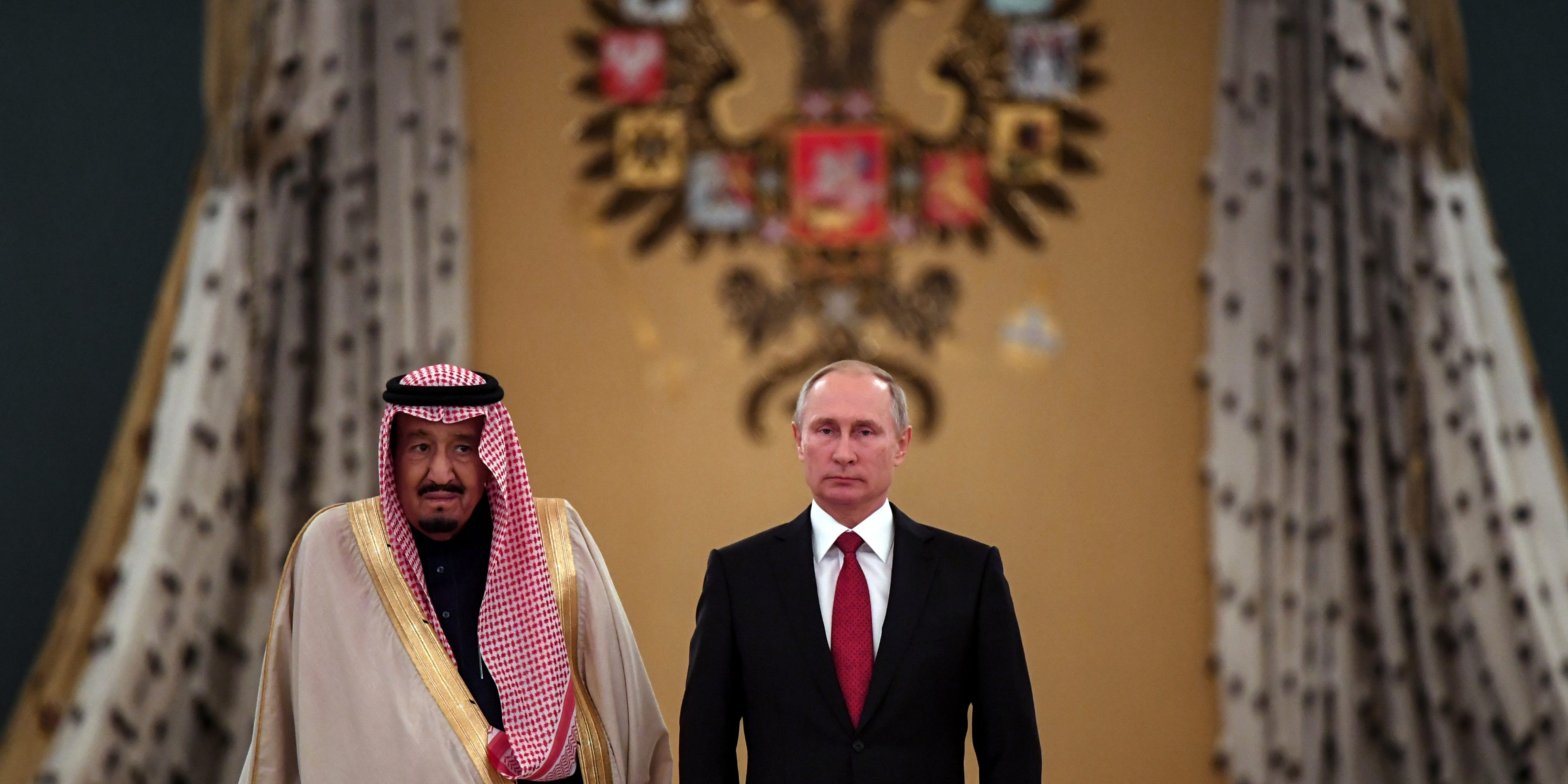Russia and Saudi Arabia have made billions in additional oil revenue after their production cuts lifted prices. Russia likely generated an additional $2.8 billion over the past quarter, according to Energy Aspects data. Meanwhile, Saudi Arabia has likely pulled in about $2.6 billion in extra revenue. Loading Something is loading.
Thanks for signing up!
Access your favorite topics in a personalized feed while you’re on the go.
Russia and Saudi Arabia have likely pulled billions in additional oil revenue after steep oil production cuts lifted crude prices.
Russia has generated an extra $2.8 billion in oil revenue this quarter compared to the April through June period, according to Energy Aspects estimates cited by the Wall Street Journal. Saudi Arabia, meanwhile, has likely pulled an extra $2.6 billion over that time frame, the equivalent of gaining an extra $30 million a day.
Both nations, which are part of OPEC+, have agreed to slash their crude production along with rest of the cartel over the past year, in an attempt to eliminate price “distortions” in the oil market, one UAE official said.
OPEC+ members initially cut production by 2 million barrels a day last October, causing oil prices to spike. Then, Saudi Arabia and Russia implemented their own voluntary production cuts this summer, with Saudi Arabia slashing production by 1 million barrels a day while Russia slashed production by half a million barrels a day. Those output cuts will be extended through the end of the year, both nations announced earlier this month.
The effects of tighter supply have already started to be felt in the energy spot market, with oil prices now hovering near a 10-month-high. Brent crude, the international benchmark, traded around $93 a barrel on Friday, while West Texas Intermediate crude traded around $92 a barrel.
Analysts have said crude prices could quickly be on track to notch $100 a barrel next year, thanks to underinvestment and chronic undersupply in the industry.
Higher oil prices could be a boon for both nations, with the money helping to fund Saudi Arabia’s various lavish spending projects as well as Russia’s war on Ukraine.
